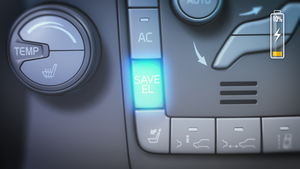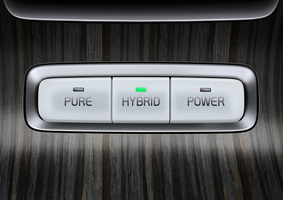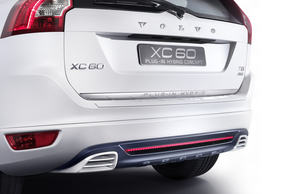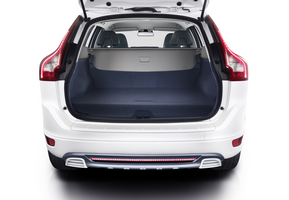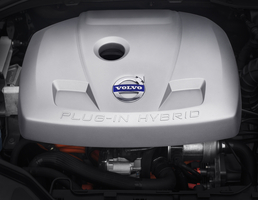|
Send this page to a friend! Fill in the form bellow | ||
NAIAS
New Volvo XC60 Plug-in Hybrid to be Shown in Detriot with Better than 100mpg
Volvo has been making a big push to be among the greenest automakers in the world. It has been working on automatic transmissions that are as efficient as its manuals; it has also been working on a electric version of the C30 and plugin version of the V60. However, all of these innovations have been limited to Europe and China. Next week at the North American International Auto Show, Volvo will show a plug-in hybrid version of its XC60 SUV.
The plug-in hybrid system used in the XC60 is unique in that allows drivers with the push of a button to decide if the car should be using purely electric power, hybrid power or all of the power focused on accelerating and sportiness. Volvo labels these modes Pure, Hybrid and Power. In Hybrid mode, the plug-in hybrid XC60 produces just 53g/km of CO2 and uses 2.3l/100km of fuel, which is the equivalent of 102 miles per gallon.Although, Volvo says that once the driver factors in the eletricity to charge the car, it is more like 50mpg. It has a range of 960km, or 600 miles.
The XC60 is all-wheel drive but not in the conventional sense. The gasoline engine powers the front wheels, and the electric motor powers the rear wheels. There is a button in the cabin labeled "AWD" that allows the driver to turn the system on and off.
"You can make really green progress on the road without compromising on any of the luxury car's renowned properties. No other manufacturer has succeeded in delivering fuel economy and electrical range on this level in a capable, spacious performance car with 350 horsepower on tap," said Stefan Jacoby, President and CEO of Volvo Car Corporation.
The engine in the XC60 plug-in hybrid is a turbocharged four-cylinder that produces 280hp and 280lb-ft of torque with an eight-speed automatic transmission. This engine is the first example of Volvo's coming Volvo Environmental Architecture (VEA) that will be coming in future Volvo models. In combination with the electric motor, the plug-in hybrid XC60 produces a total of 350hp. Volvo is claiming a 0-100km/h time in 6.1 seconds. Volvo badges the set-up as the T8 because the power is similar to what had been made by previous Volvo V8 engines.
The engine uses an integrated starter motor built into the crankshaft. While this obviously starts the car like a regular starter motor, it also generates power for the battery during braking and can give the engine an extra 45hp boost when needed.
The electric motor in the XC60 plug-in hybrid produces 70hp, and power comes from 12kWh lithium-ion battery pack. it is mounted under the cargo compartment. It takes 3.5 hours to charge from a 220v home outlet or 7.5 hours from a 110v home outlet. While recharging, the battery can also pre-heat or pre-cool the car for the next journey so that the driver uses less of the HVAC system while driving to save power.
Power can also be reserved in the battery for later. A battery in the cabin is labeled "Save". When pressed, the system makes sure to reserve enough electric power to travel 20km, or 12 miles. This is meant for when driving in city centers in Europe where there are discounts for low emissions vehicles.
"This world-class gasoline plug-in hybrid technology, featuring a state-of-the-art four-cylinder engine from our upcoming Volvo Environmental Architecture engine family, will reach our American showrooms in a couple of years. However, it is too early to say which model will be the first to feature this solution," said Jacoby.
Volvo's VEA tech will encompass gasoline and diesel engines. All of the engines will has direct injection and several levels of turbocharging. There will be variants with high power and others with high efficiency. Volvo will also add hybrids to some of these engines to boost performance and efficiency even more. The
VEA architecture is based on each cylinder being 500cc, and it can be scaled from three-cylinder engines and up. The advantage is that these engines will share many parts to make the cheaper to make and maintain. It has been designed to be very fuel efficient and have low emissions from the start. Volvo claims that they will have 35% better fuel economy compared to present engines with similar performance. The modularity of the engine family also means that Volvo can develop new engines faster.
It is fantastic to see Volvo developing new powertrains and models. Since it was sold, there has not been a lot of development coming from them. This is the first sign that the company might be back on track.
Encyclopedia |
2 comments
more
Contribute
latest articles



popular articles








